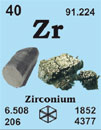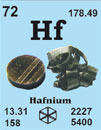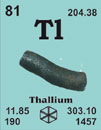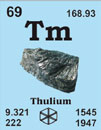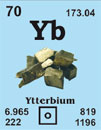Palladium 46Pd106.4
1803 von W.H. Wollaston in London, UK, entdeckt.
[Nach dem Asteroiden Pallas benannt]
French: palladium
English: palladium
Italian: palladio
Spanish: palladio
Beschreibung: Silberweißes Metall, glänzend, verformbar, duktil. Korrodiert nicht, löst sich in oxidierenden Säuren und geschmolzenen Alkalien. Absorbiert leicht Wasserstoffgas. Hauptsächlich als Katalysator verwendet.
Palladium single crystal properties
| State: |
single crystal |
|---|
| Crystal structure: |
fcc |
|---|
| Production method: |
Czochralski |
|---|
| Standard size: |
diameter 6-12mm
thickness 1-2mm |
|---|
| Orientation: |
(100), (110) and (111) |
|---|
| Orientation accuracy: |
<2°, <1°, <0.4° or <0.1° |
|---|
| Polishing: |
as cut, one or two sides polished |
|---|
| Roughness of surface: |
<0.03µm |
|---|
| Purity: |
99.999% |
|---|
| Typical analysis (ppm): |
C 3
H < 1
O 9
N < 5
Cu 1.60
Fe 1.80
Ni < 1
Pb 0.30
Si 0.30
Ga, Hf and Ta are below the detection limit
|
|---|
Materials properties
| Density: |
12.0 g/cm3 |
|---|
| Melting point: |
1551.85 °C / 1825 °K |
|---|
| Boiling point: |
3139.85 °C / 3413 °K |
|---|
| Molar volume: |
8.85 cm3 |
|---|
| Thermal conductivity: |
71.8 [300 K] Wm-1K-1 |
|---|
| Coefficient of linear thermal expansion: |
11.2 x 10-6 K-1 |
|---|
| Electrical resistivity: |
10.8x 10-8 [293 K] Wm |
|---|
| Mass magnetic susceptibility: |
+6.702 x 10-8(s) kg-1m3 |
|---|
| Young's modulus: |
121 GPa |
|---|
| Rigidity modulus: |
43.6 GPa |
|---|
| Bulk modulus: |
187 GPa |
|---|
| Poisson's ratio: |
0.39 GPa |
|---|
| Radii: |
Pd4+ 64; Pd2+ 86; atomic 138; covalent 128 |
|---|
| Electronegativity: |
2.20 (Pauling); 1.35 (Allred); 4.45 eV (absolute) |
|---|
| Effective nuclear charge: |
4.05 (Slater); 7.84 (Clementi); 11.11 (Froese-Fischer) |
|---|
| Number of Isotopes (incl. nuclear isomers): |
25 |
|---|
| Issotope mass range: |
96 -> 116 |
|---|
| Crystal structure, (cell dimentions / pm), space group |
fcc |
|---|
| X-ray diffraction: mass absorption coefficients: |
CuKα 206 (µ/r) / cm2g-1
MoKα 24.1 (µ/r) / cm2g-1 |
|---|
| Neutron scattering length: |
0.591 b/10-12 cm |
|---|
| Thermal neutron capture cross-section: |
6.9 sa / barns |
|---|
Biological data
| Biological role: |
none |
|---|
| Toxicity |
|
|---|
| Toxic intake: |
n.a. |
|---|
| Lethal intake: |
LD50 (chloride, oral, rat)25 = mg kg-1 |
|---|
| Hazards: |
Palladium is poorly absorbed by the body when ingested and PdCl2 was formerly presribed as a treatment for tuberculosis at the rate of 65 mg per day (approximately 1 mg kg-1 without apparent ill effec |
|---|
| Level in humans |
|
|---|
| Blood: |
|
|---|
| Bone: |
|
|---|
| Liver: |
|
|---|
| Muscle: |
|
|---|
| Daily dietary intake: |
n.a. |
|---|
| Total mass of element in average [70 kg] person: |
n.a. |
|---|
Geological data
| Mineral | Formula | Density | Hardness | Crystal apperance |
|---|
| Palladium |
Pd |
11.9 |
4.5 - 5 |
cub. met. white/grey |
|---|
| Chief ore: |
speciments of the native metal are found in Brazil. Most is extracted as a by-product from copper an |
|---|
| World production: |
24 tonnes/year |
|---|
| Main mining areas: |
see copper and zinc |
|---|
| Reserves: |
24 000 tonnes |
|---|
| Specimen: |
available as foil, granules, powder, rod, shot sponge or wire. Safe. |
|---|
| Abundances |
|
|---|
| Sun: |
32 (relative to H = 1 x 1012) |
|---|
| Earth's crust: |
c. 6 x 10-4 p.p.m. |
|---|
| Seawater: |
|
|---|
| Residence time: |
|
|---|
| Classification: |
recycled |
|---|
| Oxidation state: |
II |
|---|

 English
English
 Deutsch
Deutsch
